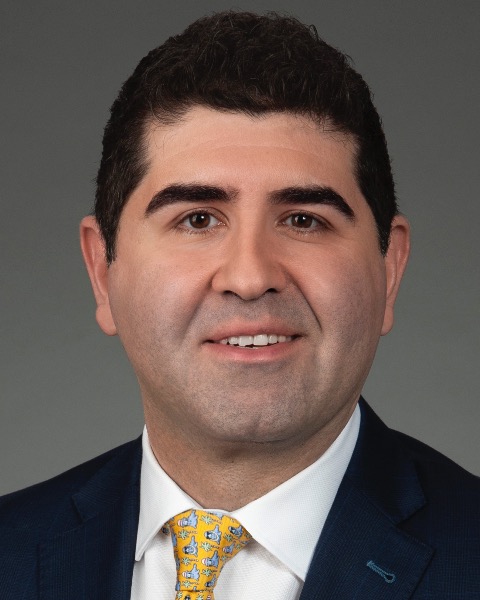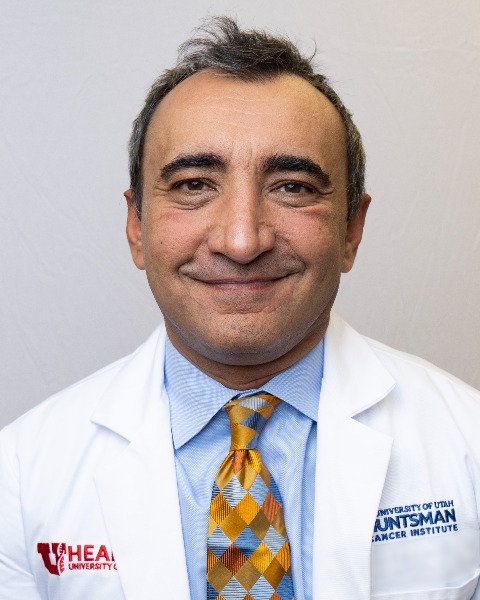Portal Hypertension
Transjugular Intrahepatic Portosystemic Shunt Creation in 151 Patients with MELD Scores ≥ 20 with shunt sizes of 6-, 8-, 10- and 12-mm.

Howard H. Dabbous, MD
Research Fellow
Emory UniversityDisclosure(s): No financial relationships to disclose

Mohammed Loya, M.D
Assistant Professor
Kaiser Permanente- MC
Mircea Cristescu, MD, MBA
Faculty
Medical College Wisconsin 
Nima Kokabi, MD
Associate Professor of Radiology
University of North Carolina - Chapel Hill- RS
Ram Subramanian, MD
Professor of Medicine and Surgery
Emory - RF
Ryan Ford, MD
Associate Professor
Emory - GR
Giorgio Roccaro, MD, MSCE
Assistant Professor
Emory Universtiy - JM
Joseph Magliocca, MD
Associate Professor of Surgery
Emory University 
Wael Saad, MD
Senior Vascular and Interventional Radiologist
University of Utah
Bill Majdalany, MD, FSIR (he/him/his)
Associate Professor
University of Vermont Medical Center
Presenting Author(s)
Author/Co-author(s)
A Model for End-Stage Liver Disease (MELD) score of greater than 19 is a relative contraindication for transjugular intrahepatic portosystemic shunt (TIPS) creation. Standard TIPS sizes have ranged from 6 mm to 12 mm. Outcomes following TIPS creation of varying sizes in patients with MELD ≥ 20 in the setting of variceal hemorrhage or ascites/hydrothorax were analyzed.
Materials and Methods:
A single-center retrospective review of patients with end-stage liver disease (ESLD), portal hypertensive complications, and MELD ≥ 20 who received TIPS of any size between January 2003 and March 2022 was conducted. Procedure indication, ESLD etiology, and baseline MELD were documented. 8-,10- and 12-mm sizes were created in standard fashion from a right hepatic to portal vein. 6 mm TIPS was created by constraining a Viatorr stent with a previously deployed 6-mm balloon-expandable stent in the parenchymal tract. Outcomes included technical success of TIPS creation, clinical resolution of variceal hemorrhage or decreased ascites/hydrothorax, 90- and 540-day mortality, and 90- and 540 -day liver transplant (LT) rates.
Results:
151 patients with mean age of 53.1 years had ESLD from alcoholic cirrhosis in 60 (40%), viral hepatitis in 34 (23%), NASH in 25 (17%), and a variety in the remainder. TIPS indication was variceal hemorrhage in 69 (46%), ascites/hydrothorax in 67 (44%), and other in 10 (7%). Baseline MELD ranged from 20 to 50 (mean 26.2; median 23). TIPS creation was technically successful in all cases 151 (100%). Clinical success was observed in 51/69 (77%) with variceal hemorrhage and 28/67 (42%) with ascites/hydrothorax. 90-day mortality was 14/34 (41%), 20/73 (27%), 10/21 (48%), and 4/18 (22%) and 540-day mortality was 17/34 (50%), 32/71 (45%), 13/21 (62%), and 10/18 (56%) for TIPS sizes 12-, 10-, 8- and 6-mm respectively. 90-day transplant rate was 8/34 (24%), 13/73 (18%), 5/21 (24%), and 6/18 (33%) and 540-day transplant rate was 12/34 (35%), 17/71 (24%), 5/21 (24%), and 7/18 (39%) for TIPS sizes 12-, 10-, 8- and 6-mm respectively. The mean transplant-free survival for the previous TIPS sizes was 1049-, 735-, 437-, and 224-days, respectively, with a p-value < .0001.
Conclusion: TIPS creation in patients with a MELD score greater than 20 was more successful in resolving variceal hemorrhage than ascites and hydrothorax, across all size TIPS. It is a viable bridge to transplant, with mortality being the lowest in the 6-mm and 8-mm TIPS groups.

.jpg)
.png)
.png)
.png)
.png)
.jpg)
.png)
.jpg)
.png)